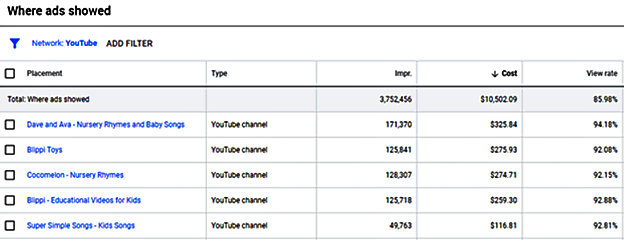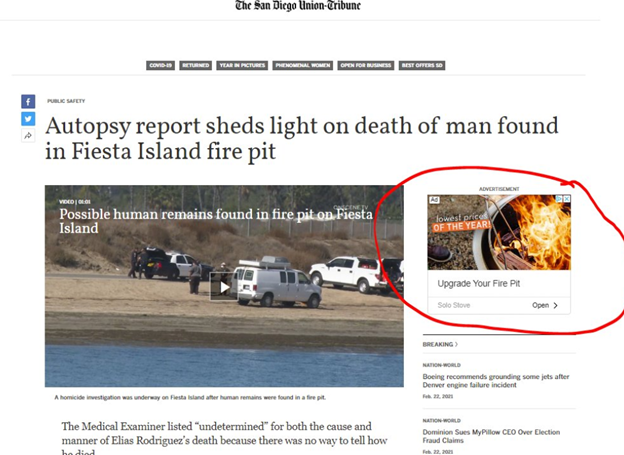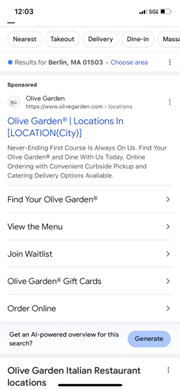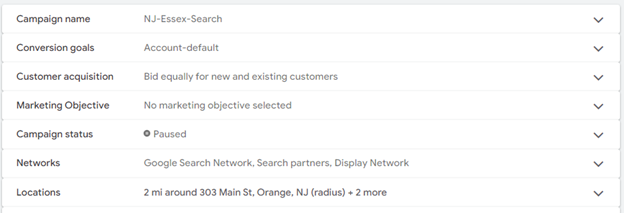

Last updated on

Back in 2005, when I first entered the realm of search marketing, there existed a Tumblr feed solely dedicated to showcasing poorly executed campaigns that clearly lacked quality assurance (QA) checks.
Utilizing dynamic keyword insertion and employing broad match strategies were surefire paths to landing on that ignominious page, often resulting in a day, or even a career, going awry.
Fast forward almost two decades, and platforms have undergone significant evolution (or perhaps regression, depending on the platform and context), magnifying the imperative for meticulous pre- and post-launch QA processes.
Yet, despite these advancements, some operations are still grappling with the consequences of oversight. This extends beyond mere paid search endeavors to encompass all facets of paid media, spanning search, shopping, PMax, YouTube/video, GDN, social platforms, and programmatic advertising.
Regrettably, such oversights frequently provide fodder for competitors who are quick to capitalize on these slip-ups, emphasizing the crucial role of QA in safeguarding against costly mistakes.
I’ll be straightforward here: I’m guilty of it too. If I spot a brand or another agency slipping up in their work and see an opportunity to capitalize on it, count me in.
In the realm of digital marketing, especially when it’s about gaining an edge over the competition (though it’s not always easy to pull off), I won’t hesitate to seize the chance. Nearly two decades in this field can cultivate that kind of mindset, especially when half the year involves watching the NY Jets fumble yet again.
Truth is, everyone, myself included, makes mistakes in digital marketing from time to time. The crucial thing is ensuring that whoever’s in charge of running the ad campaign is fully informed, from the pre-launch phase right through to the live campaign.
So, let’s dive into some of these blunders, discuss how they could’ve been nipped in the bud with a standard ongoing QA process, and outline what steps you should take in the future to cover your backside (and if you’re unfamiliar with that acronym, hop onto Bing and look it up).
Author’s Note: It’s worth mentioning upfront that there’s a multitude of errors happening all around us. Here, I’ll only touch upon the small and significant ones I’ve personally observed. Due to legal considerations, some brands that fell victim to these self-inflicted blunders will remain anonymous.
Back in 2011, I found myself working at a major holding company ad agency, overseeing media operations for a credit card company eager to sponsor a holiday they had coined, occurring just after Thanksgiving. This initiative aimed to promote shopping at local, non-chain businesses (you can probably guess the holiday).
My team was severely understaffed at the time. Representatives from a leading search engine with a prominent video platform (essentially the nation’s second-largest search engine) offered to lend a hand with the video aspect of our campaign.
We were grateful for the assistance and provided them with our targeted keyword and category list for the campaign, along with our list of negative keywords and categories. The reps assured us they would handle the execution, conduct quality assurance checks, and furnish us with the results.
That indeed turned out to be a misstep on our end.
Over the course of two weeks, the campaign ran, churning through approximately $100,000. However, upon receiving the performance report from the reps, it was evident that something had gone terribly awry. The video boasted an abysmally low view rate, an unusually high cost per view, and alarmingly scant clicks to the website (anticipating a modest turnout, but garnering fewer than 100 clicks from over 5 million impressions was perplexing).
Upon acquiring access to the data and settings (as the campaign was operated in an account initially beyond our reach), we unearthed a litany of errors. The category target list was conspicuously absent, the keyword targets had been erroneously utilized as the negative keyword list, and to compound matters, the excluded categories and negative keywords had been mistakenly employed as the targets.
Suffice it to say, keywords sourced from Urban Dictionary pertaining to intimacy inadvertently triggered an unsettlingly high volume of impressions across a spectrum of non-brand-safe content.
Following the revelation of the mishap, the representative from the major search engine acknowledged that only minimal pre-launch QA had been conducted, lacking thoroughness, and crucially, no post-launch QA had been executed.
As a form of redress, the credit card company received a $150,000 credit (bear in mind, our expenditure amounted to only $100,000). Subsequently, we never crossed paths with that sales rep again.
Fast forward to 2019, our agency secured new business for a consortium of sports nutrition brands. During the initial discussions with the brand, they showcased their YouTube data, which was undeniably impressive, particularly regarding non-skippable video content.
We’re talking about videos surpassing 45 seconds, boasting a view rate exceeding 75% at the 30-second mark (the industry benchmark being 35%), all at a remarkably low cost per view (CPV) of under $0.04.
They told us that although the metrics looked impressive, there was scant evidence of any direct or downstream sales, leading them to label the campaign a total failure. They found this puzzling and tasked me with auditing the previous agency’s work.
What I discovered raised alarms.
The brand had launched video ads that showed extremely muscular individuals, scantily clad, exercising intensely as if they were preparing for the Hunger Games. Over six months, the campaign had expended about $500,000.
Further investigation revealed a lack of content targeting, no age-specific targeting, and a complete absence of exclusions.
After completing an exhaustive 120-hour analysis, it was discovered that 60% of the advertising budget, which promoted scantily clad adults consuming pre-workout and protein shakes, had been mistakenly allocated to children’s content like Blues Clues, Coco Melon, Blippi, and every parent’s nightmare: Caillou.
Despite the impressive view rate and cost per view, there were no sales because the majority of the impressions and views targeted children aged two to seven.
The previous agency had neglected to conduct comprehensive pre-launch and post-launch quality assurance, and failed to monitor data during the campaign. Considering these oversights, the brand decided to take legal action against the agency to reclaim six months’ worth of agency fees and media spend, ultimately settling the matter out of court for a substantial mid-six-figure sum.

Keep your workout ads away from kids!
Also, if you’re using any type of retargeting, make sure you know where it’s appearing and include negative targeting!

Remarketing can be effective if you’re well-prepared. A recent experience in 2024 brought this issue to my attention with a brand I’ve never personally worked with, but after encountering the same oversight three times in six weeks, it’s time to speak up.
Apologies to the digital team at Darden Foods—I do love the breadsticks at Olive Garden, but this is an easy fix that you’ve yet to implement.
Just recently, while returning from a skiing trip, my wife spotted a sign for Olive Garden. She insisted we stop for lunch, as it had been 15 years since her last visit.
After our meal, we wondered if there was an Olive Garden near our home for future visits. So, at the table (yes, admittedly rude, but necessary), I searched for “Olive Garden Locations” on my phone, and encountered this issue:

Here we are, six weeks later, facing the same problem—frustrating, right?

This is an example where dynamic location insertion in a search ad—a usually beneficial feature when set up correctly—went awry. Instead of using the correct format with curly braces {}, square brackets [] were used.
As a result, the location cannot be properly triggered; it only shows [Location(City)], which provides a subpar user experience by failing to indicate whether there is a nearby location.
I’ve repeated this search multiple times over the last six weeks, only to realize that the advertiser has yet to notice the mistake. I suspect the error occurred during a bulk upload, as manual insertions typically have clear indicators in the UI or editor if set up correctly.
A prevalent error, easily preventable before launch but often discovered post-launch, persists since the dawn of the industry and resides within Google AdWords and Bing Ads (I’ll stick with the classics; no Google Ads or Microsoft for me) as well as Facebook/Instagram (no love for the Meta rebranding). It’s all about default settings.
Upon setting up search campaigns in Google and Bing, certain settings are pre-configured, requiring advertisers to actively modify them. This oversight is particularly common among small to medium-sized businesses, while seasoned search marketers are well aware of the need for manual adjustments.
Among the default search settings are:

Google will do what Google does best to rake in that dough from those who aren’t paying attention. And that’s just scratching the surface. Just because you lack the ideal or approved assets for these placements doesn’t mean you won’t be attracting traffic and spending money there.
Unless you intend to use them, these settings must be adjusted.
It goes without saying that in each of these scenarios, both pre-launch and ongoing quality assurance efforts can prevent many of these disasters from occurring.
I should mention that QA efforts related to Performance Max, demand generation, and Advantage+ are a bit more challenging.
But neglecting to QA them is akin to trusting Jenn Shah from RHOSLC with your customer CRM lists’ safety and legitimacy.
Now that you’re sufficiently spooked by the digital marketing deity, let’s dial it back and talk about how to avoid a dreadful encounter with the CMO who’s witnessed your ads in action.
This will instill confidence in both them and you, preventing a conversation more agonizing than the time I obliged an editor’s request to exclude a photo of me with my head stuck in a snowblower (trust me, you don’t want to see it).
A robust QA plan consists of three phases: pre-launch, post-launch, and ongoing (spoiler alert: the third phase is perpetual, but it’s just a fundamental part of your optimization strategy).
Pre-launch: Establish a standardized checklist covering all settings to ensure all elements are properly configured before launch. This includes targeting, exclusions, budgeting, assets, and more.
Post-launch: Similar to the pre-launch list, but includes an analysis of initial data to detect any anomalies, such as queries mapped to, triggered sites, networks, disapproved assets, etc. This should occur within 24 to 72 hours of launch, after data accrual.
Ongoing: This aligns directly with your ongoing optimization efforts but runs alongside them. Think of it as a perpetual post-launch checklist repeated monthly. It’s not a formal optimization document or analysis but an ongoing settings review.
If you’re familiar with my previous articles, you’ll notice this isn’t the first time I’ve addressed issues like this.
I’ve observed instances where operations or individuals neglect QA protocols, even the most basic ones. Once an internal mistake goes unnoticed and uncorrected, it can escalate quickly up the chain, potentially leading to job loss.
However, if the public catches wind of a mistake and calls it out, the cost can be substantial, with apology press conferences and campaigns running into tens of thousands of dollars.
A straightforward ongoing checklist throughout the campaign’s lifespan can spare you considerable pain and anguish later on. It’s an integral part of any robust optimization strategy, so chances are you’re already implementing it.
If you’re seeking inspiration on what such a checklist should entail, don’t hesitate to reach out to me. I can point you in the right direction.
Original news from SearchEngineJournal